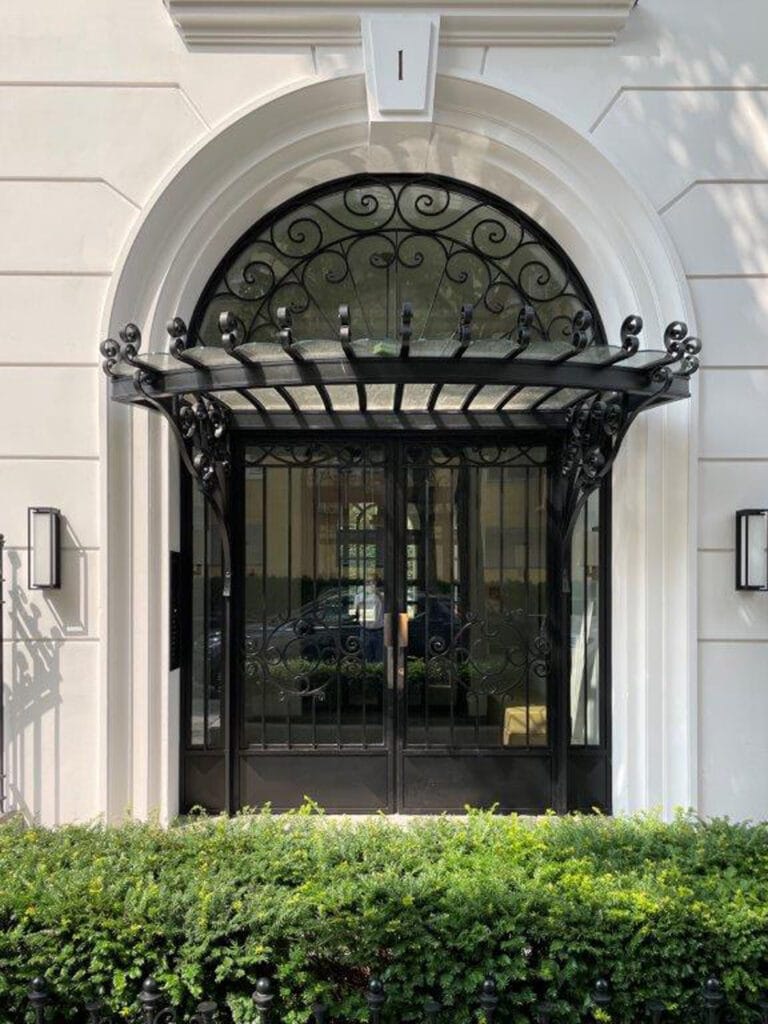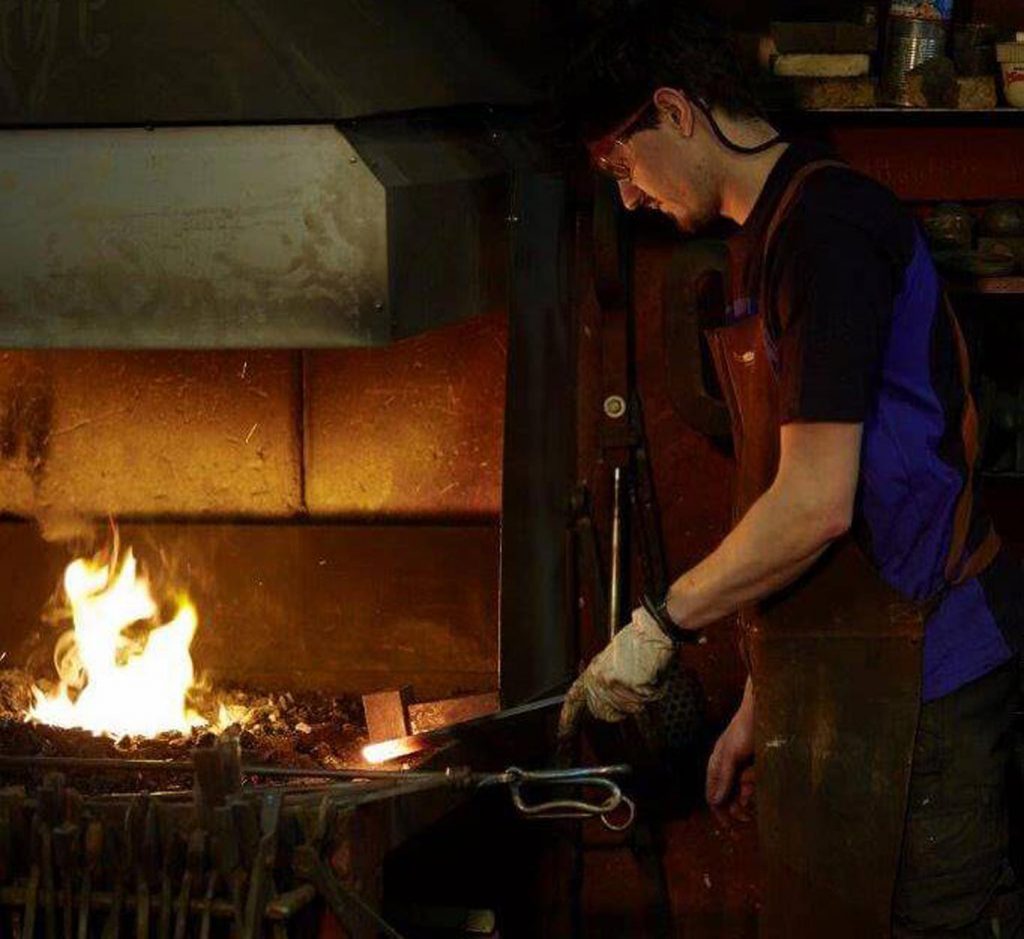Forging Hammers and Flying Sparks
Sophisticated design, the highest expectations and uncompromising quality: the elaborate details in a typical RALF SCHMITZ property could cause any master blacksmith to literally break out in a sweat.

Appealing components: Floor-to-ceiling doors give the minimalist interior an unusual character. Truly masterful metalwork is required to make such difficult work look so light and easy
The floor-to-ceiling windows must be at once narrow and strong enough to hold the massive slabs of glass that transform the spacious rooms in the urban condominiums into light-filled domiciles. It is precisely these delicate and elegant steel frames, like the ones in our LINIE72 apartment building, that are challenging even for the most experienced metalworker. For the assembly and installation of these incredibly heavy doors both strength and sensitivity are required – the same elements that have always defined the profession.
And to achieve the best results, even with such challenges, only master blacksmiths are able to transform RALF SCHMITZ’s demanding blueprints into actual works of art. The magnificent elements of the façades, bell plaques and railings of the lavish EISENZAHN 1 development showcase the deep experience and detailed implementation of the blacksmithing required. Contoured lines, decorative ironwork and delicate flourishes out of indestructible steel decorate the whitewashed building near the Kurfürstendamm, belying the crushingly hard work behind it. The fence alone is made up of 100 decorative elements, all made by hand!

The capacious foyer roof of EISENZAHN 1, typical for turn-of-the-century buildings, was a real challenge for the blacksmith: a three-dimensional static was used to make the ornate decorative roof. Left: A finished door with glass panes weighs around 150 kilo

Hammer, anvil, tongs and the gleam of forge coal coke – a medieval charm continues to be an essential part of the craft, even in this highly technical age
Blacksmithing is one of humanity’s oldest trades. Blacksmiths historically enjoyed high social status because of their ability to make useful objects by harnessing the power of fire. The ancient Greeks even bestowed them the god Haephestus. A blacksmith can create something fluid and beautiful out of a rigid material and it is precisely this transformation that holds a constant fascination, even in modern times. A large part of blacksmithing today is done by machines and much of the difficult work is thus rendered easier, but for special elements of facades or railings, the human touch is essential.
“We bet on artisanship, on people and their abilities, and on age-old techniques,” says Ralf Schmitz. You couldn’t choose a better way to describe the impressive work of this ancient tradition.